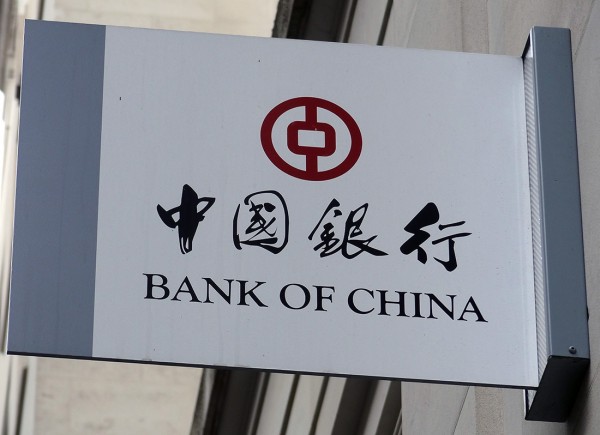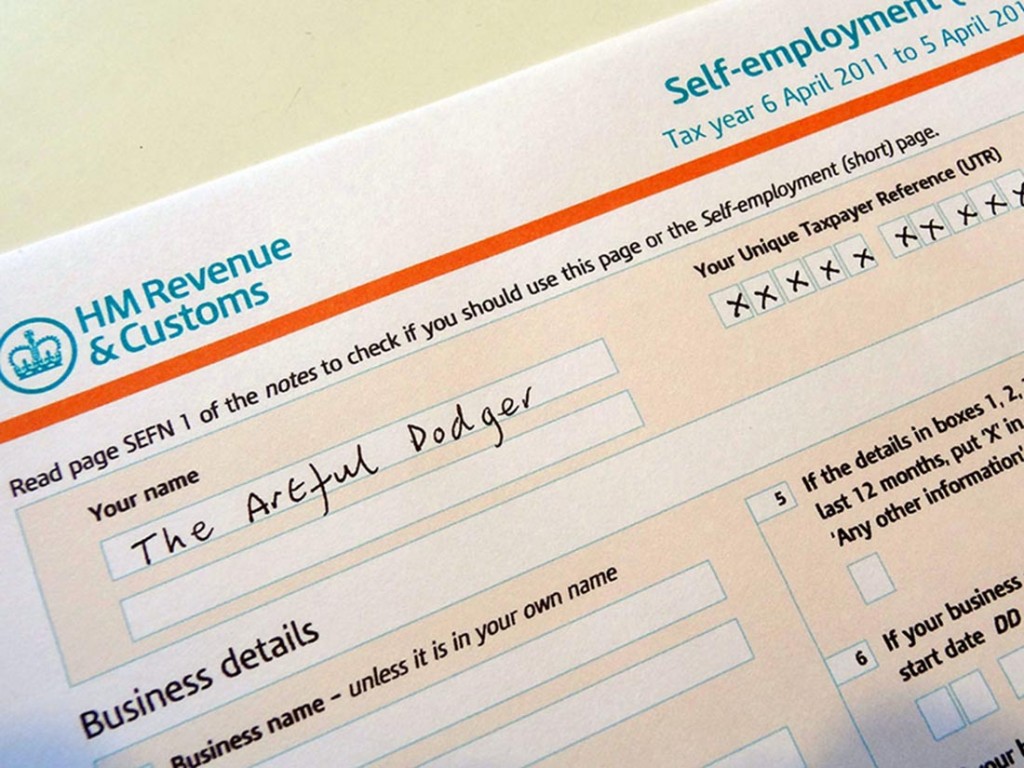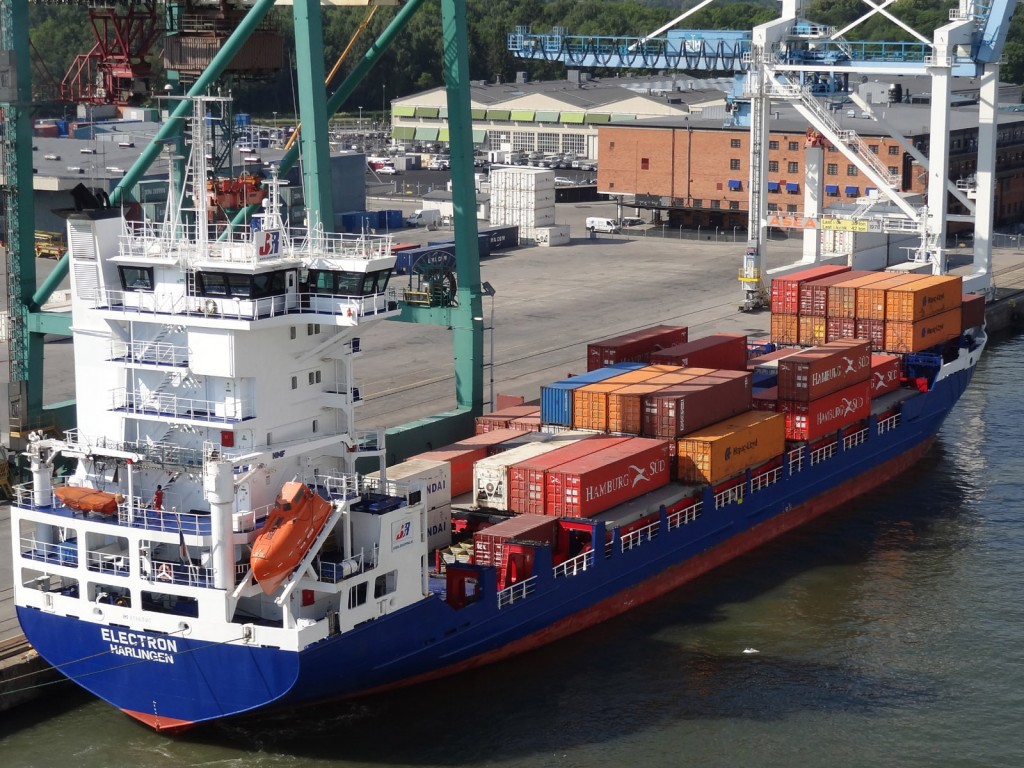 Investment is essential for the growth of any economy, but none more so for an economy recovering from a severe downturn, such as the UK. Not only will it bring in much needed money and then create jobs for UK residents, but it will also continue to build ties between the UK and the world’s fastest growing economy.
Investment is essential for the growth of any economy, but none more so for an economy recovering from a severe downturn, such as the UK. Not only will it bring in much needed money and then create jobs for UK residents, but it will also continue to build ties between the UK and the world’s fastest growing economy.
George Osborne has been in China promoting business opportunities for investment in the UK and one such investment is into Manchester Airport. The ‘Airport City’ Project will be a combined effort, or a Joint Venture, between the Greater Manchester Pension Fund, the UK’s Carillion Plc and Beijing Construction Engineering Group. The plan is to create offices, hotels, warehouses and manufacturing firms, bringing in thousands of jobs in the process, thus providing a much needed boost to the British economy. Britain is already one of the top nations attracting Chinese investment, with more than double the amount of any other European nation. George Osborne is clearly in favour of further improving business ties with China, saying:
I think it shows that our economic plan of doing more business with China and also making sure more economic activity in Britain happens outside the City of London is working…That’s good for Britain and good for British people.
 However, the benefit of such investment from China into the UK, is not just of benefit to our domestic economy. China will also reap benefits from its involvement in projects, such as the development of Manchester’s airport. The Managing Director of BCEG, Mr Xing Yan, said:
However, the benefit of such investment from China into the UK, is not just of benefit to our domestic economy. China will also reap benefits from its involvement in projects, such as the development of Manchester’s airport. The Managing Director of BCEG, Mr Xing Yan, said:
To be included in such an interesting and unique development is a real honour…We see our involvement in Airport City as an extension of the memorandum of understanding between China and the UK, where we have been looking to further explore joint infrastructure opportunities for some time.
The airport investment by China is only one of many of its recent forays into the UK economy. Other investments include plans to rebuild London’s Crystal Palace and plans to create a third financial district near London’s City Airport.
Some may see more Chinese involvement in UK business as a threat, but for most it is viewed as an opportunity. An opportunity that both Boris Johnson and George Osborne will undoubtedly exploit as far as possible, with the hope that it will generate income, employment and growth. The following articles consider this investment opportunity.
Manchester Airport Group announces jobs boost The Telegraph, David Millward (13/10/13)
China’s BCEG joins UK Manchester airport joint venture Reuters (13/10/13)
Manchester Airport to receive investment from China BBC News (13/10/13)
George Osborne hails China’s airport investment The Telegraph (13/10/13)
Chinese group in $1.2bn British airport development deal The Economic Times (13/10/13)
China in £800m Manchester airport deal Financial Times, Elizabeth Rigby and Lucy Hornby (13/10/13)
Boris and Osborne in China to push trade Sky News, Mark Stone (13/10/13)
What does China own in Britain? BBC News (14/10/13)
Questions
- What is a joint venture? What are the advantages and disadvantages of a joint venture relative to other business structures?
- How important are political ties with China?
- Do you view Chinese investment in the UK as an opportunity or a threat? Make a list for each side of the argument, ensuring you offer explanations for each reason.
- What macroeconomic benefits will the development of the Manchester Airport bring to the city?
- Will there be wider economic benefits to the rest of the UK, despite the investment being located in Manchester?
- Using the AD/AS model, illustrate and explain why investment is so important to the recovery of the UK economy.
 ‘Farm-gate’ milk prices (the price paid to farmers) have been rising in the UK. In July they reached a record high of 31.4p per litre (ppl). This was 5.1ppl higher than in July 2012. There were further price rises this month (October). Sainsbury’s increased the price it pays farmers by nearly 2ppl to 34.15ppl and Arla Foods by 1.5ppl to 33.13ppl. Muller Wiseman is set to raise the price it pays to 32.5p per litre.
‘Farm-gate’ milk prices (the price paid to farmers) have been rising in the UK. In July they reached a record high of 31.4p per litre (ppl). This was 5.1ppl higher than in July 2012. There were further price rises this month (October). Sainsbury’s increased the price it pays farmers by nearly 2ppl to 34.15ppl and Arla Foods by 1.5ppl to 33.13ppl. Muller Wiseman is set to raise the price it pays to 32.5p per litre.
And yet many farmers are struggling to make a profit from milk production, claiming that their costs have risen faster than the prices they receive. Feed costs, for example, have risen by 2.12ppl. On average, farmers would need over 38p per litre just to cover their average variable costs. What is more, exceptional weather has reduced yields per cow by some 7%.
Meanwhile, in the USA, supply has risen by some 1.3% compared with a year ago. But despite this, the prices of dairy products are rising, thanks to strong demand. Cheese and butter prices, in particular, are rising rapidly, partly because of high demand from overseas. Demand for imported dairy products is particularly high in China, where supply has fallen by some 6% in the past couple of months.
 The problem for dairy farmers in the UK is partly one of the power balance in the industry. Farmers have little or no market power. Supermarkets, however, have considerable market power. As large oligopsonistic buyers, they can put downward pressure on the prices paid to their suppliers. These are mainly large processing firms, such as Robert Wiseman Dairies, Arla Foods and Dairy Crest. They, in turn, can use their market power to keep down the price they pay to farmers.
The problem for dairy farmers in the UK is partly one of the power balance in the industry. Farmers have little or no market power. Supermarkets, however, have considerable market power. As large oligopsonistic buyers, they can put downward pressure on the prices paid to their suppliers. These are mainly large processing firms, such as Robert Wiseman Dairies, Arla Foods and Dairy Crest. They, in turn, can use their market power to keep down the price they pay to farmers.
Articles
Dairy farmers renew protests over milk prices Farmers Weekly, Philip Case (5/9/13)
Dairy farmers ‘lost more than 1p/litre last year’ Farmers Weekly, Philip Case (2/10/13)
South West farming businesses and producers still making a loss on milk South West Business (3/10/13)
Q&A: Milk prices row and how the system works BBC News (23/7/12) (note date of this)
Positive Dairy Trend: Rising Milk Production and Strong Demand The Farmer’s Exchange, Lee Mielke (27/9/13)
Chinese supply crisis to delay dairy price adjustment Rabobank (25/9/13)
China milk ‘crisis’ fuels world dairy price rise Agrimoney (1/10/13)
Data
UK milk prices and composition of milk ONS
Combined IFCN world milk price indicator IFCN
Questions
- Give some examples of (a) variable costs and (b) fixed costs in milk production.
- Why may farmers continue in dairy production, at least for a time, even if they are not covering their average variable costs?
- What factors determine (a) the price of milk paid to farmers; (b) the retail price in supermarkets?
- Explain how dairy futures markets work.
- Could the milk processors use their market power in the interests of farmers? Is it in the interests of milk processors to do so?
- Why is there a Chinese “dairy supply crisis”? What is its impact on the rest of the world? What is the relevance of the price elasticity of demand for dairy products in China to this impact?
 The growth of emerging economies, such as China, India and Brazil brings with it both good and bad news for the once dominant countries of the West. With growth rates in China reaching double digits and a much greater resilience to the credit crunch and its aftermath in these emerging nations, they became the hope of the recovery for the West. But, is it only benefits that emerge from the growth in countries like China?
The growth of emerging economies, such as China, India and Brazil brings with it both good and bad news for the once dominant countries of the West. With growth rates in China reaching double digits and a much greater resilience to the credit crunch and its aftermath in these emerging nations, they became the hope of the recovery for the West. But, is it only benefits that emerge from the growth in countries like China?
Chinese business has grown and expanded into all areas, especially technology, but countries such as the USA have been reluctant to allow mergers and takeovers of some of their businesses. Notably, the takeovers that have been resisted have been in key sectors, particularly oil, energy and technology. However, it seems as though pork is an industry that is less important or, at least, a lower risk to national security.
 Smithfield Foods is a US giant, specialising in the production and selling of pork. A takeover by China’s Shuanghui International Holdings has been approved (albeit reluctantly) by the US Committee on Foreign Investment. While the takeover could still run into obstacles, this Committee’s approval is crucial, as it alleviates concerns over the impact on national security. The value of the deal is some $7.1bn, including the debt that Shuangui will have to take on. While some see this takeover as good news, others are more concerned, identifying the potential negative impact it may have on prices and standards in the USA. Zhijun Yang, Shuanghui’s Chief Executive said:
Smithfield Foods is a US giant, specialising in the production and selling of pork. A takeover by China’s Shuanghui International Holdings has been approved (albeit reluctantly) by the US Committee on Foreign Investment. While the takeover could still run into obstacles, this Committee’s approval is crucial, as it alleviates concerns over the impact on national security. The value of the deal is some $7.1bn, including the debt that Shuangui will have to take on. While some see this takeover as good news, others are more concerned, identifying the potential negative impact it may have on prices and standards in the USA. Zhijun Yang, Shuanghui’s Chief Executive said:
This transaction will create a leading global animal protein enterprise. Shuanghui International and Smithfield have a long and consistent track record of providing customers around the world with high-quality food, and we look forward to moving ahead together as one company.
The date of September 24th looks to be the decider, when a shareholder meeting is scheduled to take place. There is still resistance to the deal, but if it goes ahead it will certainly help other Chinese companies looking for the ‘OK’ from US regulators for their own business deals. The following articles consider the controversy and impact of this takeover.
US clears Smithfield’s acquisition by China’s Shuanghui Penn Energy, Reuters, Lisa Baertlein and Aditi Shrivastava (10/9/13)
Chinese takeover of US Smithfield Foods gets US security approval Telegraph (7/9/13)
US clears Smithfield acquisition by China’s Shuanghui Reuters (7/9/13)
Go-ahead for Shuanghui’s $4.7bn Smithfield deal Financial Times, Gina Chon (6/9/13)
US security panel approves Smithfield takeover Wall Street Journal, William Mauldin (6/9/13)
Questions
- What type of takeover would you classify this as? Explain your answer.
- Why have other takeovers in oil, energy and technology not met with approval?
- Some people have raised concerns about the impact of the takeover on US pork prices. Using a demand and supply diagram, illustrate the possible effects of this takeover.
- What do you think will happen to the price of pork in the US based on you answer to question 3?
- Why do Smithfield’s shareholders have to meet before the deal can go ahead?
- Is there likely to be an impact on share prices if the deal does go ahead?
 If you ask most people whether they like paying tax, the answer would surely be a resounding ‘no’. If asked would you like to pay less tax, most would probably say ‘yes’. Evidence of this can be seen in the behaviour of individuals and of companies, as they aim to reduce their tax bill, through both legal and illegal methods.
If you ask most people whether they like paying tax, the answer would surely be a resounding ‘no’. If asked would you like to pay less tax, most would probably say ‘yes’. Evidence of this can be seen in the behaviour of individuals and of companies, as they aim to reduce their tax bill, through both legal and illegal methods.
Our tax revenues are used for many different things, ranging from the provision of merit goods to the redistribution of income, so for most people they don’t object to paying their way. However, maintaining profitability and increasing disposable income is a key objective for companies and individuals, especially in weak economic times. Some high profile names have received media coverage due to accusations of both tax avoidance and tax evasion. Starbucks, Amazon, Googe and Apple are just some of the big names that have been accused of paying millions of pounds/dollars less in taxation than they should, due to clever (and often legal) methods of avoiding tax.
 The problem of tax avoidance has become a bigger issue in recent years with the growth of globalisation. Multinationals have developed to dominate the business world and business/corporation tax rates across the global remain very different. Thus, it is actually relatively easy for companies to reduce their tax burden by locating their headquarters in low tax countries or ensuring that business contracts etc. are signed in these countries. By doing this, any profits are subject to the lower tax rate and are thus such companies are accused of depriving the government of tax revenue. Apple is currently answering questions posed by a US Senate Committee, having been accused of structuring its business to create ‘the holy grail of tax avoidance’.
The problem of tax avoidance has become a bigger issue in recent years with the growth of globalisation. Multinationals have developed to dominate the business world and business/corporation tax rates across the global remain very different. Thus, it is actually relatively easy for companies to reduce their tax burden by locating their headquarters in low tax countries or ensuring that business contracts etc. are signed in these countries. By doing this, any profits are subject to the lower tax rate and are thus such companies are accused of depriving the government of tax revenue. Apple is currently answering questions posed by a US Senate Committee, having been accused of structuring its business to create ‘the holy grail of tax avoidance’.
Many may consider the above and decide that these companies have done little wrong. After all, many schemes aimed at tax avoidance are legal and are often just a clever way of using the system. However, in a business environment dominated by the likes of Google, Apple and Amazon, the impact of tax avoidance may not just be on the government’s coffers. Indeed John McCain, one of the Committee members asked:
…Couldn’t one draw the conclusion that you and Apple have an unfair advantage over domestic based corporations and companies, in other words, smaller companies in this country that don’t have the same ability that you do to locate in Ireland or other countries overseas?
The concern is that with such ability to avoid huge amounts of taxation, large companies will inevitably compete smaller ones out of the market. Local businesses, without the ability to re-locate to other parts of the world, pay their full tax bills, but multinationals legally (in most cases) manage to avoid paying their own share. With a harsh economic climate continuing globally, these large companies that aim to further increase their profitability through such means as tax avoidance will naturally bear the wrath of smaller businesses and individuals that are struggling to get by. It’s likely that this topic will remain in the media for some time. The following articles consider some of the companies accused of participating in tax avoidance schemes and the consequences of doing so.
Is Apple’s tax avoidance rational? BBC News, Robert Peston (21/5/13)
 Apple’s Tim Cook defends tax strategy in Senate BBC News (21/5/13)
Apple’s Tim Cook defends tax strategy in Senate BBC News (21/5/13)
Senator accuses Apple of ‘highly questionable’ billion-dollar tax avoidance scheme The Guardian, Dominic Rushe (21/5/13)
Apple’s Tim Cook faces tax avoidance questions Sky News (21/5/13)
EU leaders look to end Apple-style tax avoidance schemes Reuters, Luke Baker and Mark John (21/5/13)
Apple Chief Tim Cook defends tax practices and denies avoidance Financial Times, James Politi (21/5/13)
Apple CEO Tim Cook tells Senate: tiny tax bill isn’t our fault, it’s yours Independent, Nikhil Kumar (21/5/13)
Miliband promises action on Google tax avoidance The Telegraph (19/5/13)
Google is cheating British tax payers out of millions…what they are doing is just immoral’: Web giant accused of running ‘scandalous’ tax avoidance scheme by whistleblower Mail Online, Becky Evans (19/5/13)
Multinational CEOs tell David Cameron to rein in tax avoidance rhetoric The Guardian, Simon Bowers, Lawrie Holmes and Rajeev Syal (20/5/13)
Fury at corporate tax avoidance leads to call for a global response The Guardian, Tracy McVeigh (18/5/13)
Questions
- What is the difference between tax evasion and tax avoidance? Is it rational to engage in such schemes?
- What are tax revenues used for?
- Why are multinationals more able to engage in tax avoidance schemes?
- Is the problem of tax avoidance a negative consequence of globalisation?
- How might the actions of large multinationals who are avoiding paying large amounts of tax affect the competitiveness of the global market place?
- Is there justification for a global policy response to combat the issue of tax avoidance?
- What are the costs and benefits to a country of having a low rate of corporation tax?
- How would a more ‘reasonable’ tax on foreign earnings allow the ‘free movement of capital back to the US’?
 A key debate for some months has been the UK’s membership of the European Union. The debate has centred around the desire to return some powers back to the UK, but this has extended into the possibility of a referendum on our membership of the preferential trading area. So, let’s take a step back and consider why any country would want to be a member of a preferential trading area.
A key debate for some months has been the UK’s membership of the European Union. The debate has centred around the desire to return some powers back to the UK, but this has extended into the possibility of a referendum on our membership of the preferential trading area. So, let’s take a step back and consider why any country would want to be a member of a preferential trading area.
Preferential trading areas can be as basic as a free trading area or as advanced as a currency, or even political union. The eurozone is clearly a currency union, but the European Union, of which the UK is a member, is a common market. A common market has no tariffs and quotas between the members, but in addition there are common external tariffs and quotas. The European union also includes the free movement of labour, capital and goods and services. Membership of a preferential trading area therefore creates benefits for the member countries. One such benefit is that of trade creation. Members are able to trade under favourable terms with other members, which yields significant benefits. Countries can specialise in the production of goods/services in which they have a comparative advantage and this enables greater quantities of output to be produced and then traded.
Other benefits include the greater competition created. By engaging in trade, companies are no longer competing just with domestic firms, but with foreign firms as well. This helps to improve efficiency, cut costs and thus lower prices benefiting consumers. However, from a firm’s point of view there are also benefits: they have access to a much wider market in which they can sell their goods without facing tariffs. This creates the potential for economies of scale to be achieved. Were the UK to completely exit the EU, this could be a significant loss for domestic firms and for consumers, who would no longer see the benefits of no tariffs on imported goods. Membership of a preferential trading area also creates benefits in terms of potential technology spillovers and is likely to have a key effect on a country’s bargaining power with the rest of the world. As is a similar argument to membership of a trade union, there is power in numbers.
There are costs of membership of a preferential trading area, but they are typically outweighed by the benefits. However, estimates suggest that the cost of EU regulation is the equivalent of 10% of UK GDP. Furthermore, while the UK certainly does trade with Europe, data suggests that only 13% of our GDP is dependent on such exports. The future is uncertain for the European Union and Britain’s membership. There are numerous options available besides simply leaving this preferential trading area, but they typically have one thing in common. They will create uncertainty and this is something that markets and investors don’t like. Vince Cable warned of this, saying:
There are large numbers of potential investors in the UK, who would bring employment here, who have been warned off because of the uncertainty this is creating.
The impact of the UK’s decision will be significant and not just for those living and working in the economy. The world is no interdependent that when countries exist (or typically enter) a preferential trading area the wider economic effects are significant. While any change in the UK’s relationship with the EU will take many months and years to occur and then further time to have an effect, the uncertainty created by the suggestion of a change in the relationship has already sent waves across the world. The following articles consider the wider single market and the current debate on UK membership.
European Union: if the ‘outs’ get their way, we’ll end up like Ukraine Guardian, Vince Cable (16/5/13)
Conservative MP James Wharton champions bill to guarantee EU referendum Independent, Andrew Grice (16/5/13)
Nick Clegg shifts ground over EU referendum The Guardian, Patrick Wintour (15/5/13)
Cameron tells EU rebels to back referendum law Reuters, Peter Griffiths (16/5/13)
The EU and the UK – the single market BBC Democracy (4/3/13)
Single market dilemmas on Europe BBC News, Stephanie Flanders (14/5/13)
Lord Wolfson: I back the single market – but not at any cost The Telegraph, Lord Wolfson (19/1/13)
EU focuses on returning single market to health Financial Times, James Fontanella-Khan (8/5/13)
Questions
- What other examples of preferential trading areas are there? How close are they to the arrangement of the European Union?
- In each of the above examples, explain the type of preferential trading area that it is.
- What are the benefits and costs of being a member of a preferential trading area such as the EU? How do these differ to being a member of a) a free trade area and (b) a customs union?
- What options are open to the UK in terms of re-negotiating its relationship with the EU? In each case, explain how the benefits and costs identified in question 3 would change.
- Why is the UK’s decision so important for the global economy? Would it be in the interests of other economies? Explain your answer.
 Investment is essential for the growth of any economy, but none more so for an economy recovering from a severe downturn, such as the UK. Not only will it bring in much needed money and then create jobs for UK residents, but it will also continue to build ties between the UK and the world’s fastest growing economy.
Investment is essential for the growth of any economy, but none more so for an economy recovering from a severe downturn, such as the UK. Not only will it bring in much needed money and then create jobs for UK residents, but it will also continue to build ties between the UK and the world’s fastest growing economy. However, the benefit of such investment from China into the UK, is not just of benefit to our domestic economy. China will also reap benefits from its involvement in projects, such as the development of Manchester’s airport. The Managing Director of BCEG, Mr Xing Yan, said:
However, the benefit of such investment from China into the UK, is not just of benefit to our domestic economy. China will also reap benefits from its involvement in projects, such as the development of Manchester’s airport. The Managing Director of BCEG, Mr Xing Yan, said:






